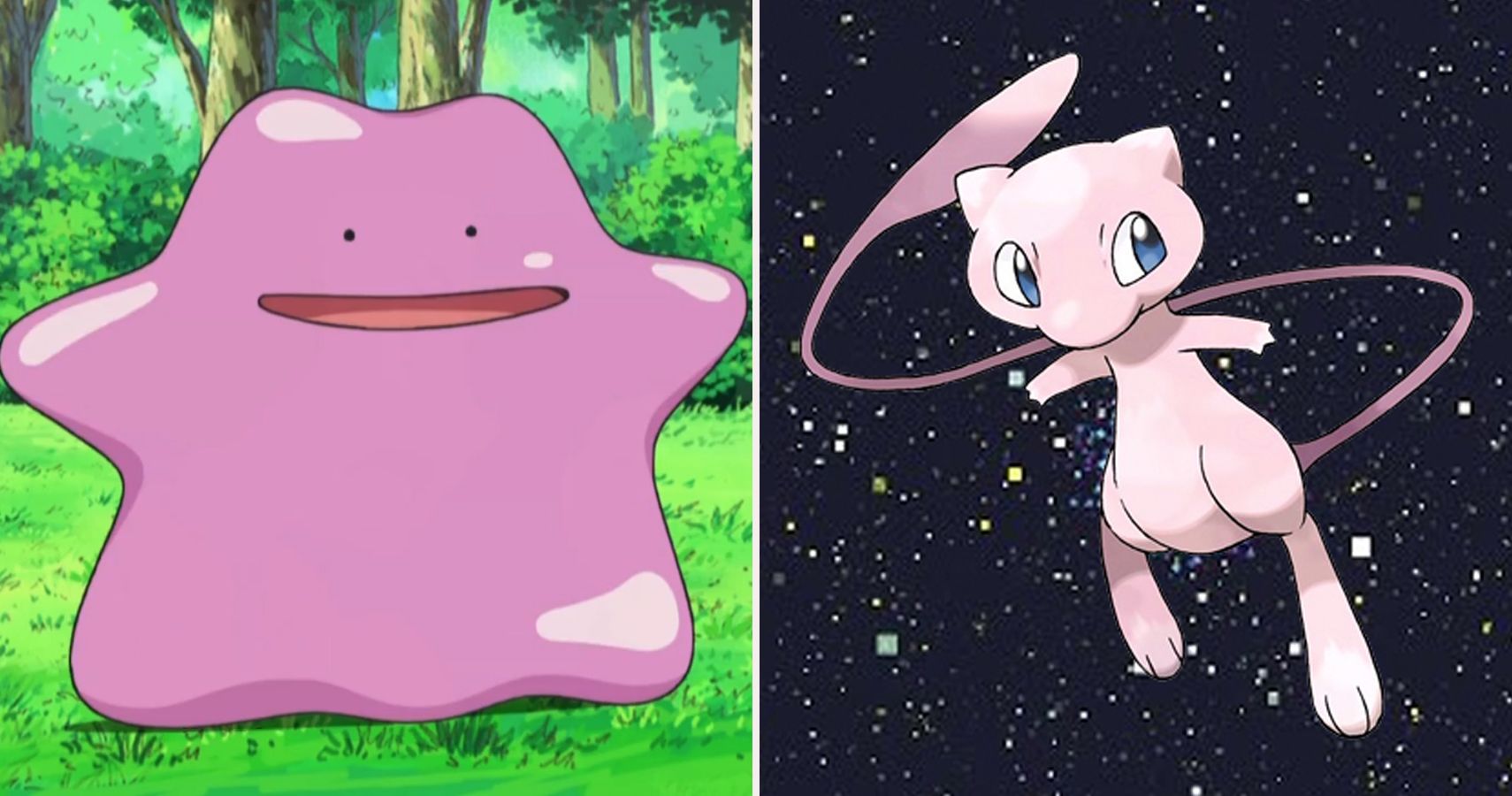When it comes to pop culture, Pokémon Red and Blue are some of the most important video games ever made. The Pokémon legacy has withstood the test of time, becoming one of the best-selling video game series of all time, a successful long-running television series and an extensive film franchise. Pokémon has become nothing less than a cultural phenomenon and media empire spanning trading card games, comic books, action figures, and much more. Most recently, Pokémon made headlines again with the mega-successful augmented reality mobile app Pokémon Go. Pokémon remains a globally popular media franchise and celebrated its twentieth anniversary in 2016. But no matter how big the name grows, it's important to remember that Pokémon Red/Blue were the original flagship titles that made Pokémon series the success it is today.
Even two decades after their release, Red and Blue remain one of the industry's best-selling and most beloved role-playing games. Nostalgic gamers still remember the late 90s when every kid had a Game Boy or Game Boy Color, and every kid had either Red or Blue. Collecting, trading, and evolving in the endless pursuit of the notion of "Gotta Catch 'Em All" lies at the heart of Pokémon Red/Blue's lasting appeal. The two games compelled players to grind and train, to trade and battle with friends, and explore the world of Pokémon with a profound sense of wonder. Even now, nostalgic gamers are making new discoveries in these aging but surprisingly complex games, and rediscovering their aspiration to build the best team of monsters and teach them the best moves.
Here are 15 things you might not have known about Pokémon Red/Blue, including some of the games' hidden secrets, glitches, and behind-the-scenes trivia.
The Original Final Battle Was Professor Oak
[caption id="attachment_3489" align="alignnone" width="1400"]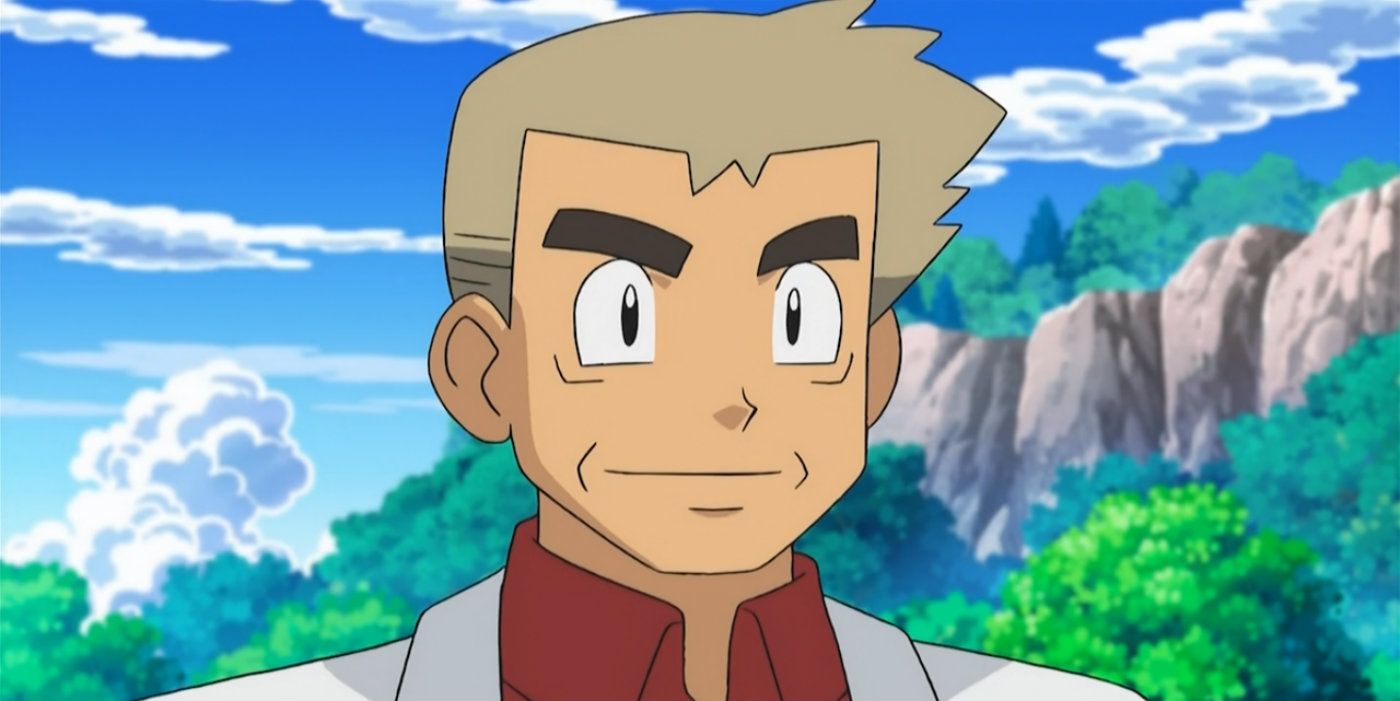 via screenrant.com[/caption]
via screenrant.com[/caption]
Professor Oak is known as a constant source of guidance and wisdom in the franchise; with his scientific commitment to Pokémon and helpful demeanor, he appears as an older mentor to the player character. But in the original Pokémon Red and Blue, he was going to be your strongest opponent in combat. The data for the unused battle against Professor Oak is still in the game, but is inaccessible without the use of glitches or a GameShark cheat device.
This would have been no easy battle: Oak had a team of high-level Pokémon for use in a standard trainer battle, including a level 66 Tauros, a level 67 Exeggutor, a level 68 Arcanine, a level 70 Gyarados, and the fully-evolved form of one of the three Kanto starter Pokémon (the remaining one that neither you nor your rival chose at the beginning of the game) at level 69. Notably, the strength of Oak's team would have placed him above the Elite Four and on par with your rival and the Pokémon League Champion, implying he was originally meant to be the Champion.
The legendary battle was not included in the final game, likely because the developers decided at some point that Oak should be more of a mentor and source of support in the Pokémon universe, and that's the role he's played ever since.
Originally Going to be 190 Pokémon
[caption id="attachment_3488" align="alignnone" width="1280"]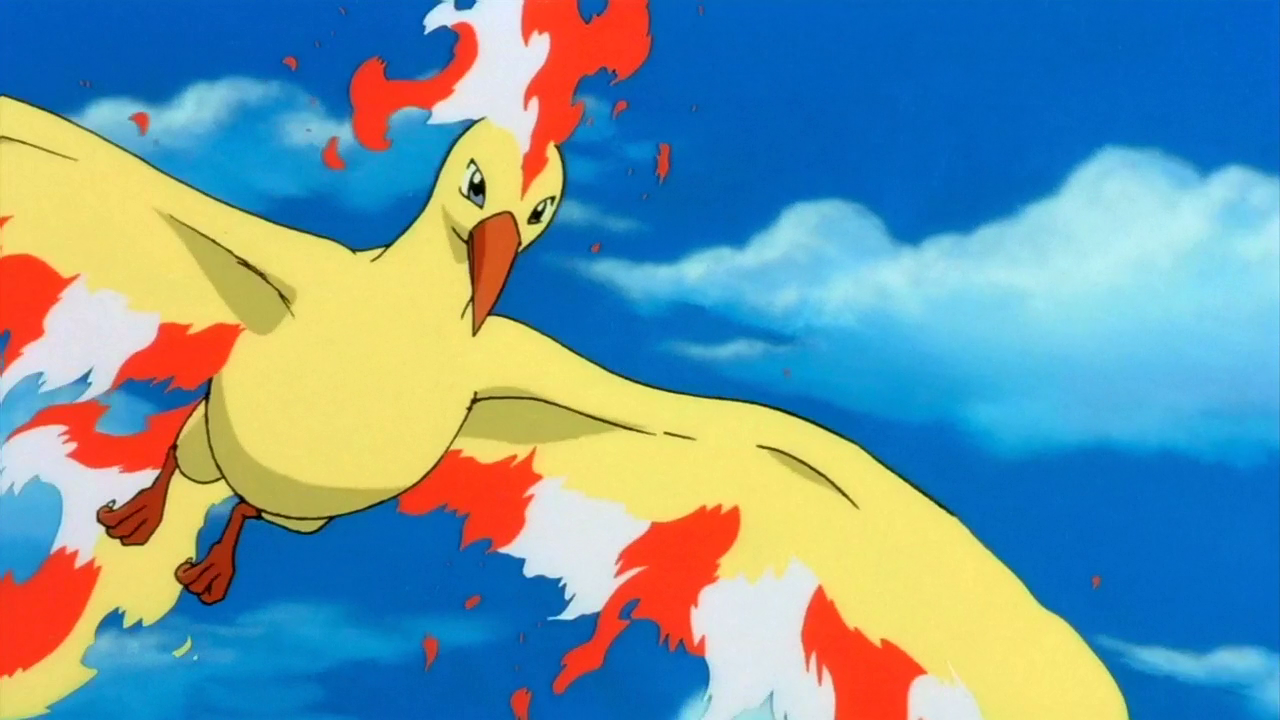 via bgr.com[/caption]
via bgr.com[/caption]
"Gotta catch 'em all" was the ubiquitous slogan of Pokémon in the late '90s when the anime and the Game Boy games exploded in popularity, leading to what is often called the "Pokémon Craze." Catching all 151 available Pokémon (including Mew) seemed like a monumental task in the first generation of Pokémon games, but it might have been even more challenging if Pokémon Red and Blue had contained all 190 Pokémon originally intended.
There were originally going to be a whopping 190 Pokémon, but 39 of them had to be cut to save space. This left 39 instances of the infamous Missingno glitch in the vacant date slots, "Missingno" itself being short for "missing no.," or missing number. This matches up with the fact that the last non-glitch Pokémon, Victreebel, appears at index number 190 in the game's ROM. According to reports and Bulbapedia, all 39 of the cut Pokémon eventually ended up in Pokémon Gold and Silver. Along with the 39 unused designs for Generation I, 66 additional Pokémon were created at the same time and added on to Generation II.
The 'Focus Energy' Move Was Actually Useless
 via youtube.com[/caption]
via youtube.com[/caption]
Ask any seasoned Pokémon fan about the most useless move and you're bound to hear Magikarp's comical non-damaging "Splash" brought up more than once. After all, the move had no effect whatsoever. After the player selected the move, it would simply show Magikarp going through a dipping animation and then give the message, "no effect!" But as it turns out there was another move that was not only useless, but actually harmful: "Focus Energy"
In Generation I, the normal-type move "Focus Energy" was coded incorrectly. It was meant to multiply the user's chance to score a critical hit by four, but due to the coding error, it instead divided the critical hit ratio by four; in effect making scoring a critical four times less likely. This unfortunate effect applies to both players and AI, which hilariously means that whenever an AI opponent uses "Focus Energy" in Pokémon Red, Blue, or Yellow uses it, they are hilariously sabotaging themselves and wasting a move. This error was later fixed in Generation II.
Red and Blue Saved Game Freak
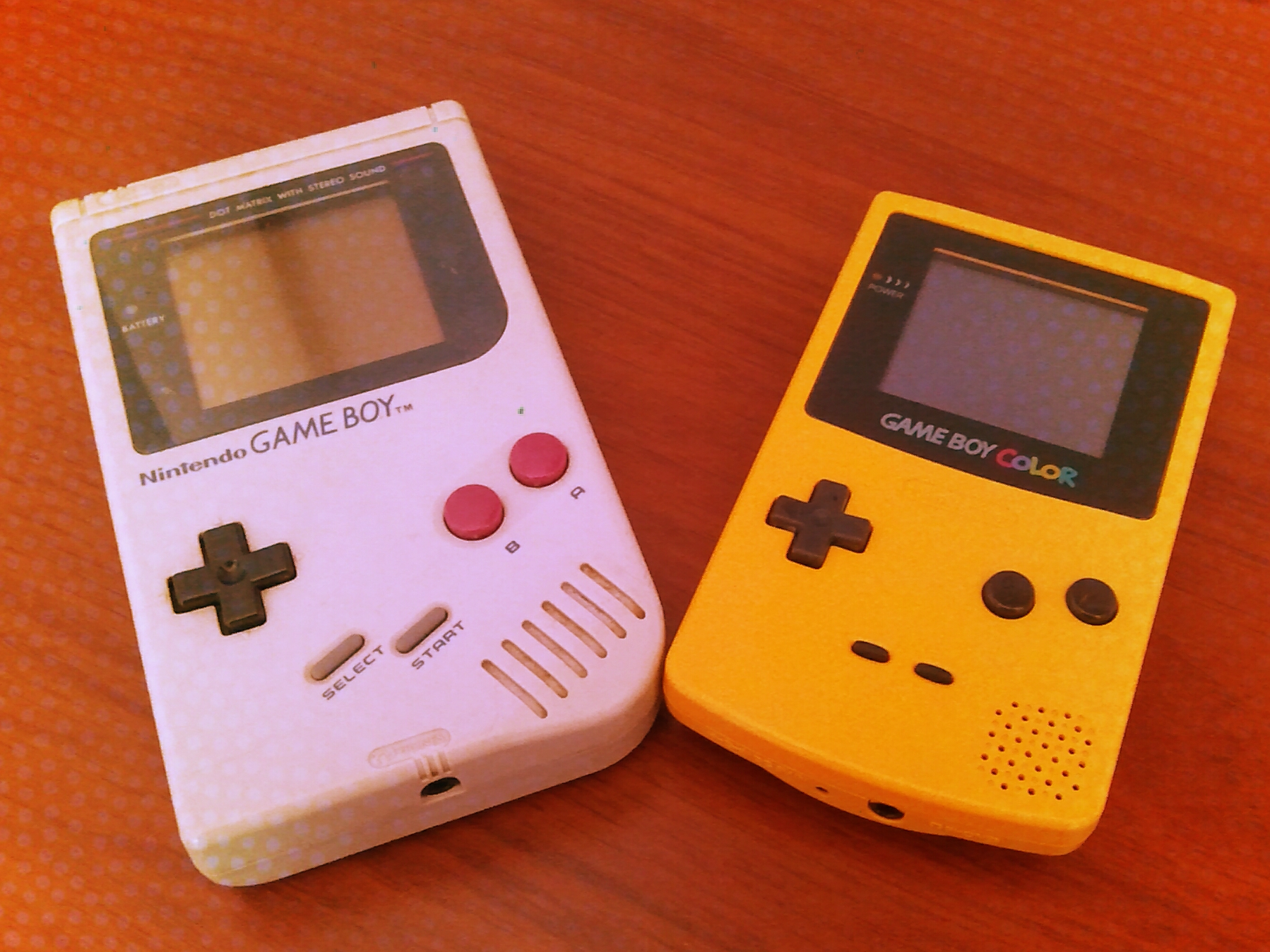 via businessinsider.com[/caption]
via businessinsider.com[/caption]
Everyone knows that Pokémon Red and Blue were a huge success, selling millions of copies worldwide, spreading the popularity of Pokémon to the United States, and starting what would become a multi-billion-dollar franchise. But what some might not know is that Red and Blue saved developer Game Freak from bankruptcy and singlehandedly revived the sales for Nintendo's aging Game Boy system. An article in TIME magazine characterized the dire straights of Game Freak:
"During the six years it took Tajiri to finish Pokémon, Game Freak nearly went broke. For several months, he barely had enough money to pay his employees. Five people quit when he told them how dire the financial conditions were. Tajiri didn't pay himself, but lived off his father. Perhaps the tensions were creative."
Nintendo of Japan was ready to write off the releases as a loss. Tajiri also noted that at the time of release in 1996, Game Boy tech was already considered yesterday's news. No magazines, TV shows, or even toymakers were interested because they all thought the Game Boy was old news. After the games became a smashing success, the Game Boy itself would end up getting an upgraded version, the Game Boy Color, later the same year as the North American release of Red and Blue.
Mew Was Catchable
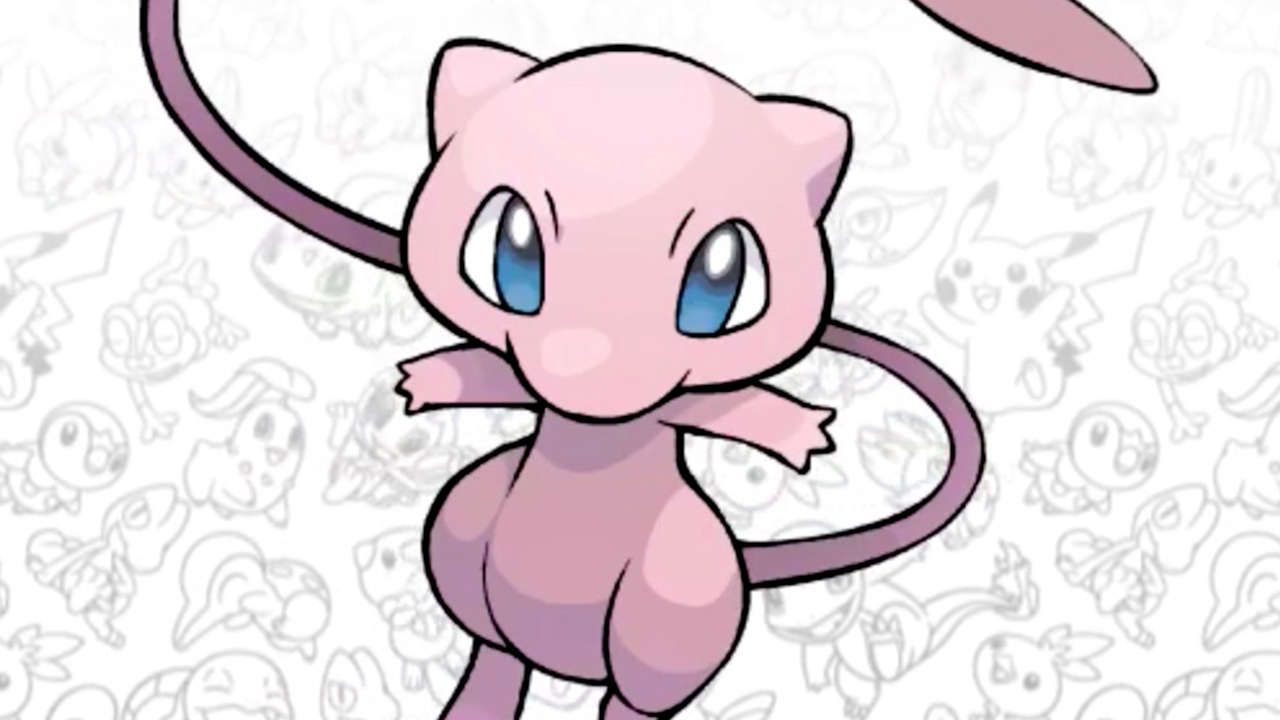 via gamespot.com[/caption]
via gamespot.com[/caption]
There is perhaps no Pokémon so highly sought-after as Mew, number 151, the rarest of all Pokémon. When Pokémon Red and Blue were released, there were seemingly endless conspiracy theories about how to catch Mew, most of which proved to be rumor, legend, or utter nonsense. From using "Strength" to move that truck in Vermillion City near the U.S.S. Anne, to completing the Pokédex, to beating the Elite Four 100 times, there was no end to plausible but disappointingly false theories we would try out in order to get our hands on the legendary Pokémon.
Mew, in the original Red and Blue, required the use of glitches or a GameShark to obtain, and none of the glitches that work actually use the popular rumors that were around (no, you can't move the truck, sorry). Though Mew was not intended to appear in the final game, the programming for him exists, and dedicated gamers have found a convoluted way that the rarest of all Pokémon can be legitimately captured.
Dead Raticate Theory
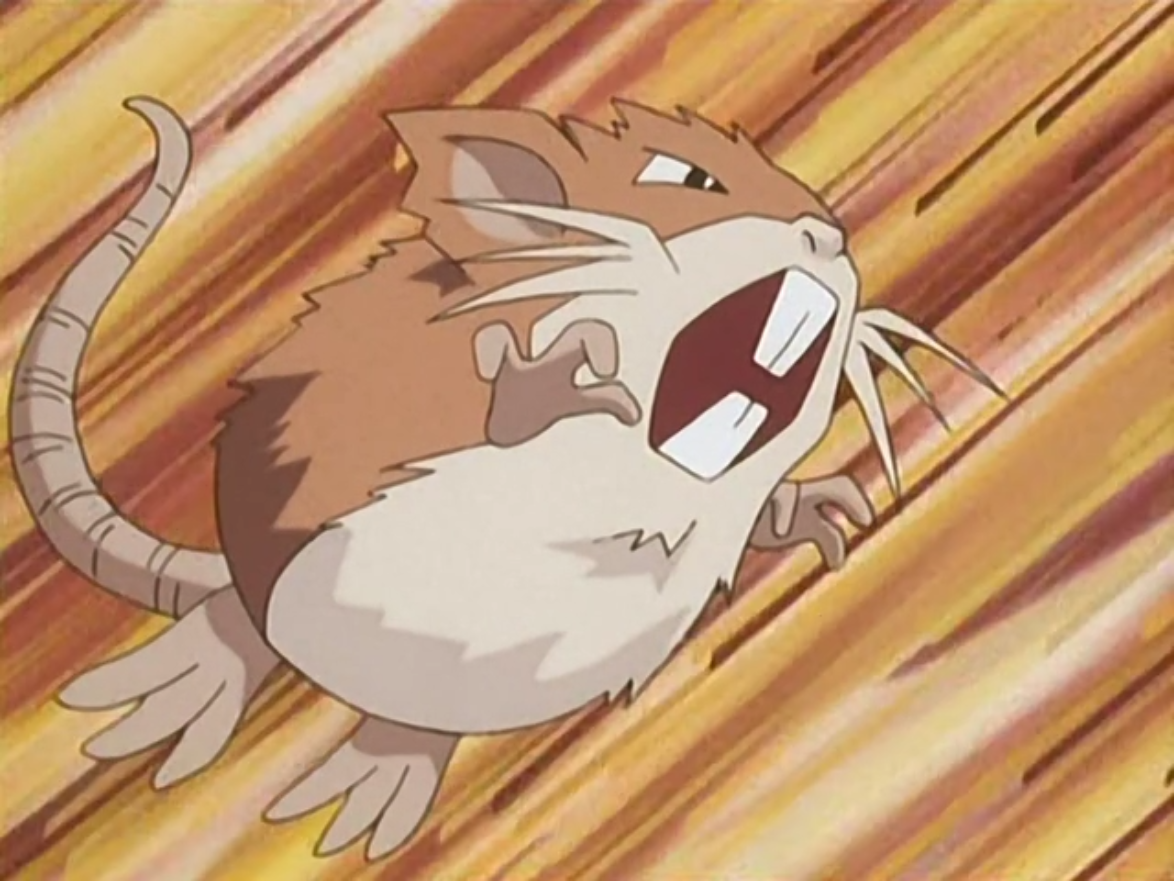 via pokemon.wikia.com[/caption]
via pokemon.wikia.com[/caption]
Pokémon creepypastas have become widespread over the years of its popularity. One of the most widespread and disturbing rumors among the fandom is the idea that you are responsible for the death of your rival's Raticate in Pokémon Red/Blue. The evidence is that when you encounter your rival in Lavender Town, he asks why you're in the Pokémon Tower since you don't have any dead Pokémon to mourn. This implies that he lost a Pokémon and, at this point in the game, he no longer has the Raticate that he used in previous battles, including your last rival battle on the U.S.S. Anne.
This has led some astute fans to theorize that your rival's Raticate sustained serious injuries during your last encounter on the luxury liner, but your rival was unable to make it to the Pokémon Center on time and his Raticate died from his wounds (the real reason he's in Lavender Town to begin with). The fan theory goes on to portray you as the true bad guy of the story, crushing your rival's dreams, being responsible for the death of his Pokémon and thus his child-like innocence, and by the end of the game even snatching away the love of his grandfather. By the way, your rival is an orphan.
Pokémon War Theory
[caption id="attachment_3483" align="alignnone" width="1566"]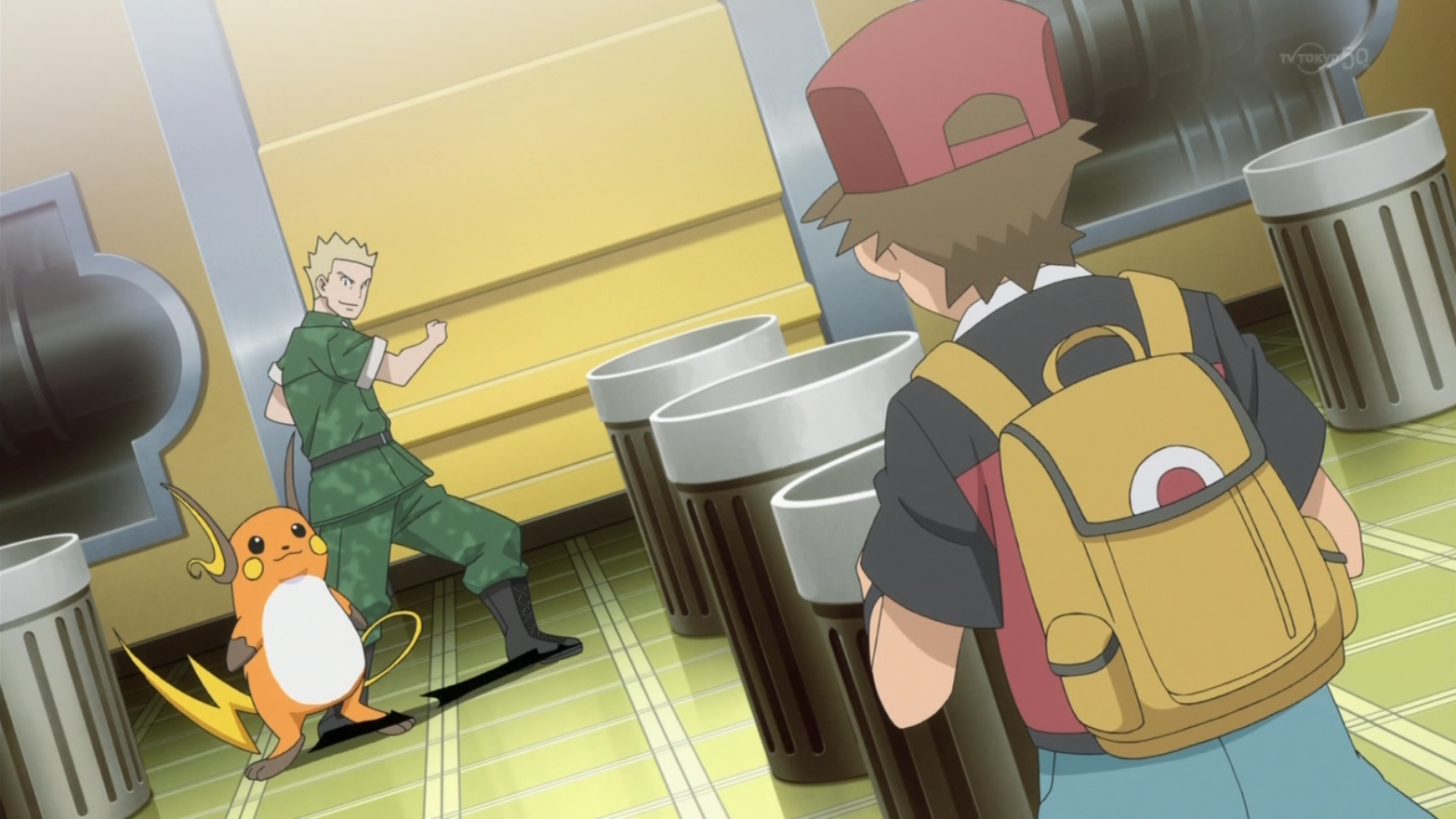 via pokemon.wikia.com[/caption]
via pokemon.wikia.com[/caption]
Speaking of Pokémon fan theories, another compelling one that explains the social logic of some of the more bizarre aspects of the Pokémon Universe – like say, ten-year-old children being allowed to wander the world without supervision – is the Pokémon War Theory, also known as the Kanto War Theory. The theory claims that Pokémon Red/Blue/Yellow take place just a few years after a devastating war between Kanto and a rival nation, or possibly even a world war, involving the use of Pokémon.
This would also explain why you have no father in the game and your rival is an orphan, as well as why children are allowed to go on unsupervised journeys around the world. Hospitals and gyms are everywhere in the world, but Kanto seems to lack infrastructure or much population. The lack of adult males in the game except for the very elderly or those working for the military or organized crime is also notable. One of the few you meet is Lt. Surge, who delivers perhaps the strongest evidence for the theory with the line: "Hey, kid! What do you think you're doing here? You won't live long in combat! That's for sure! I tell you kid, electric Pokémon saved me during the war!"
According to this theory, you and your rival both lost parents in the war and are now among the first generation of young people born in the post-war age.
Spoon-Bending Psychic Uri Geller Tried to Sue Over Kadabra
[caption id="attachment_3564" align="alignnone" width="1174"]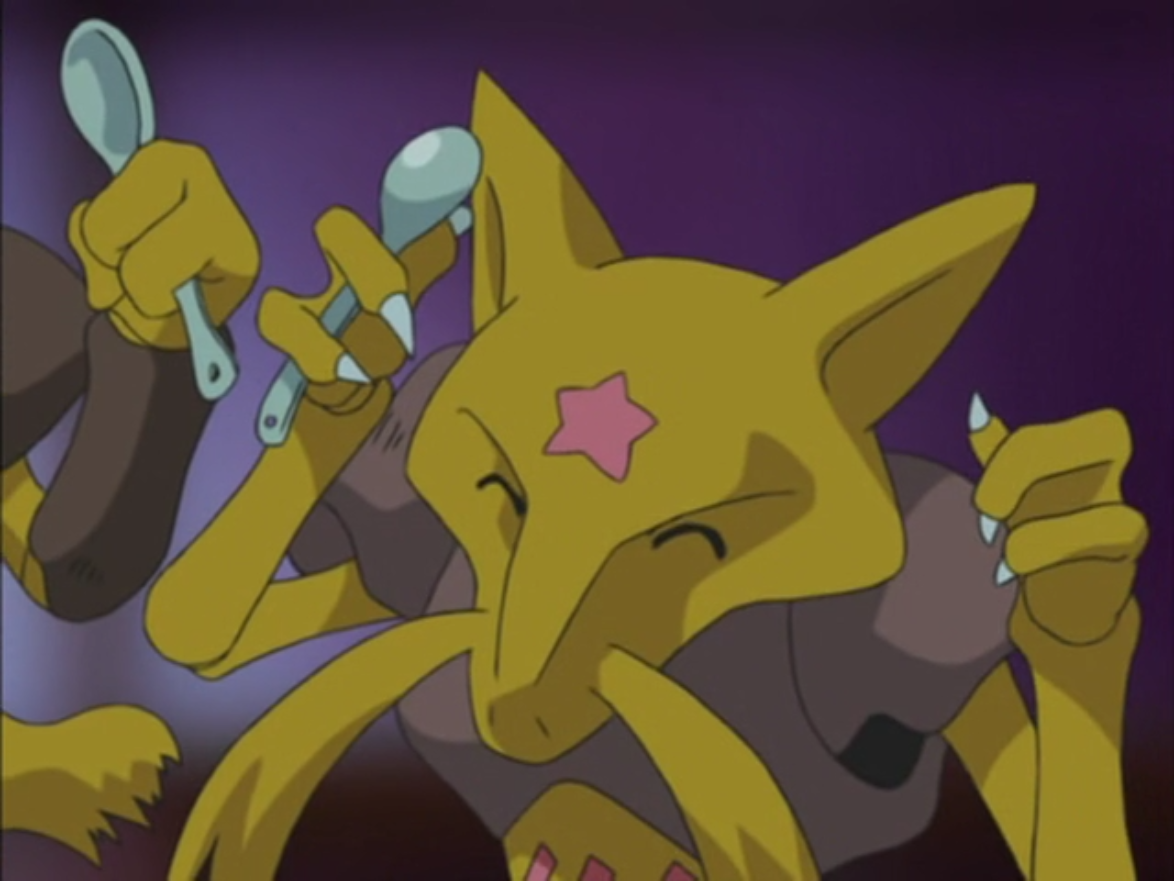 via pokemon.wikia.com[/caption]
via pokemon.wikia.com[/caption]
In November of 2000, Israeli psychic Uri Geller sued Nintendo for $100 million in damages, claiming that the psychic-type Pokémon Kadabra was an unauthorized parody of his image (Geller famously claims to be able to bend spoons with his psychic abilities, and Kadabra always carries silver spoons). Kadabra's name in Japan is also Yungerer or Un-Geller, which is pronounced very similar to Geller's name. Geller also claimed that the markings on Kadabra's chest resembled the Nazi SS symbol and the Pokémon looked occult and evil, which would tarnish his image further.
Despite the lack of a court order for Nintendo, Kadabra has not been printed on any new cards in the TCG since 2003 and has not appeared in the show since 2005. Abra has also been given the attack "Warp Evolution," in which it can evolve straight into Alakazam. The case is still ongoing, and Pokémon director and storyboard artist Masamitsu Hidaka has since confirmed that Kadabra will not be used on a new trading card until the case is settled.
Missingno Came From Deleted Pokémon and Prompted an Official Response From Nintendo
[caption id="attachment_3481" align="alignnone" width="3200"]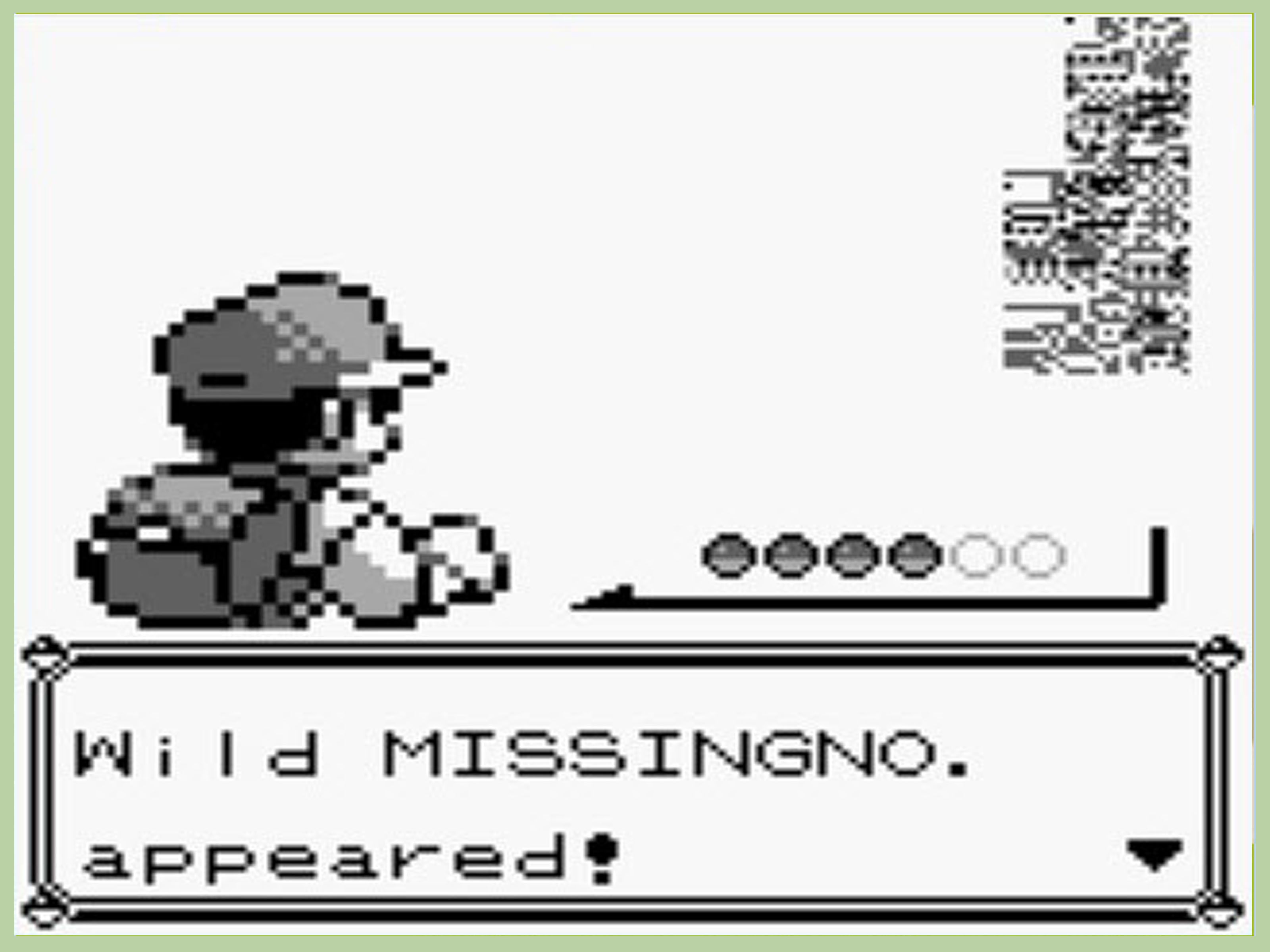 via wikihow.com[/caption]
via wikihow.com[/caption]
When it comes to Pokémon glitches, few are as famous (and infamous) as Missingno, or Missing Number. The glitch Pokémon can be seen by knowing the moves "Fly" and "Surf," going to Viridian City and watching the old man's catching tutorial, and then immediately flying to Cinnabar Island and surfing along its eastern coastline without moving away from the coast or back onto the island. Eventually, a glitch Pokémon called Missingno will appear, and the item in the sixth slot of the player's inventory will be duplicated to the maximum of 255.
The "Missingno" name was displayed as such due to the ten character limit in the Generation I games. It had five forms, including its typical "normal" form of a strange backward L-shaped block of glitched pixels, a Lavender Town ghost, a mixed-up form in Pokémon Yellow, and the fossil skeletons of both Aerodactyl and Kabutops. Its cry is a "blank" one generated by the game (in this case a Nidoran cry). The glitch Pokémon has had a number of rumors around it, including that it was originally a deleted Pokémon and that catching it would damage your cartridge, scramble your sprites, or erase your data. Missingno was such a popular glitch that Nintendo was compelled to make an official statement about it, calling it a "programming quirk" and "not a real part of the game."
There Was A Misprint on the Boxes
[caption id="attachment_3567" align="alignnone" width="800"]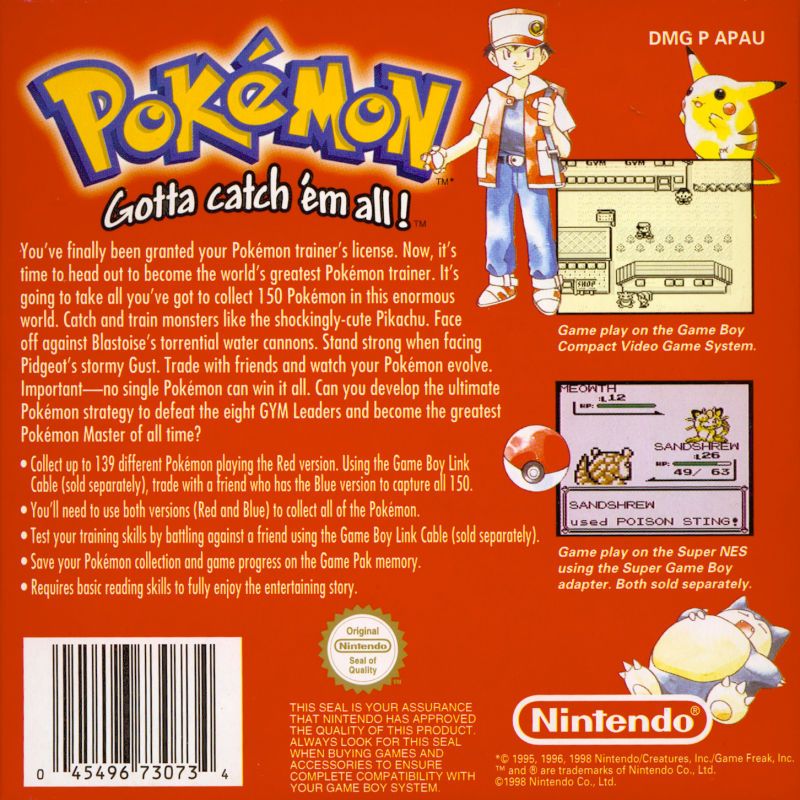 via pokemongoapkfree.com[/caption]
via pokemongoapkfree.com[/caption]
Because of the limited space of the early Game Boy cartridges, players of Pokémon Red/Blue had to trade Pokémon in order to catch all 150. Several Pokémon were exclusive to each game and others could only evolve through trading. But a blurb on the back of the boxes for Pokémon Red/Blue stated that 139 different Pokémon could be obtained in each game without trading. This, however, is somewhat mistaken.
The 139 number includes all Pokémon that a player must choose between during the course of the game, including decisions such as Omanyte and Kabuto fossils, Hitmonlee and Hitmonchan, three of the Eeveelutions, the two unchosen starter Pokémon, and four Pokémon that can only evolve through trading. Since these Pokémon cannot be obtained in the world at large without cheats or glitches, the true total of different Pokémon obtainable in one complete adventure is 124. The remaining number of missing Pokémon are simply exclusive to the other corresponding title.
There Were Plans for a Female Protagonist
[caption id="attachment_3479" align="alignnone" width="482"]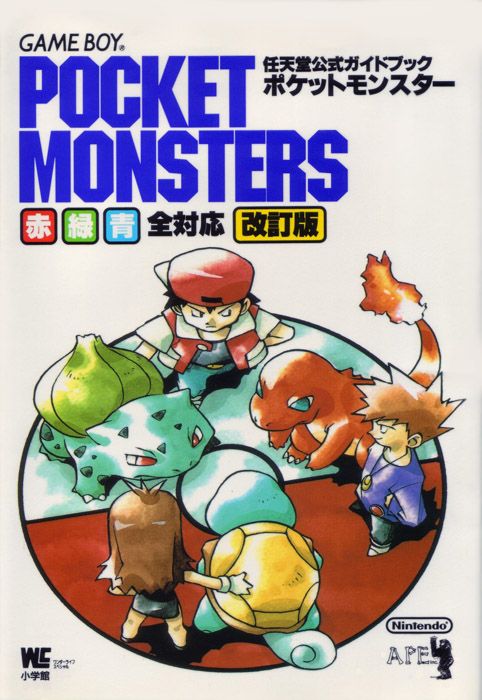 via bulbapedia.bulbagarden.net[/caption]
via bulbapedia.bulbagarden.net[/caption]
There were originally plans for a female protagonist, as shown by the artwork drawn by Ken Sugimori used for the cover of the games' official strategy guide. The artwork depicts an unknown female character standing beside Red and Blue and accompanied by a starter Pokémon, implying she was going to be a main character. This would also round out the three named characters to: Red, Blue, and Green. This unknown character would be the basis for Green from Pokémon Adventures. The same character was also featured in Emiko Yoshino's art for Pokémon Craft DX magazine.
Though probably cut to save space, the reasons for not including this character are unknown, though the character has been redesigned and included in several other incarnations. This character shares many nearly identical physical similarities with Leaf, who appeared in a game in Generation III. Leaf was a playable character in Pokémon FireRed and LeafGreen, finally providing an alternative to the exclusively male main characters in Generation I.
Lavender Town Syndrome
[caption id="attachment_3478" align="alignnone" width="1280"] via youtube.com[/caption]
via youtube.com[/caption]
Lavender Town is unique in the world of Pokémon as a dark and creepy setting within a children's game. Known mainly as a Pokémon graveyard and famous for ghost sightings in the Pokémon Tower, Lavender Town is filled with mourning trainers and an eerie sense of tragedy. Aside from the dead Raticate conspiracy theory, another rumor haunts the nostalgic memories of the small town in northwest Kanto. According to a famous creepypasta, there was a peak in suicides and illnesses among children between the ages of 7-12 shortly after the games were first released in Japan in February 1996. The children took their own lives by hanging or jumping from great heights, and those who didn't commit suicide acted irrationally and complained of headaches. Supposedly these suicides and illnesses occurred after the children played the game up until Lavender Town.
Rumors say this was because of the Lavender Town music, which had the pitch set too high in the original Japanese release and the theme contained frequencies only children and young teens (who have more sensitive hearing than adults) could hear. The Lavender Town music was subtly changed between the Japanese and North American releases of the Pokémon games to remove some of the high-pitched notes. This was actually because people in Japan complained of headaches due to the shrill music, leading to the rumors of Japanese children committing suicide after the headaches.
Criticized For Sprite Errors
[caption id="attachment_3477" align="alignnone" width="1280"] via youtube.com[/caption]
via youtube.com[/caption]
Despite being a classic and revolutionary Game Boy game and the source for many peoples' 90s nostalgia and love for all things Pokémon, there's no denying that Pokémon Red/Blue had their fair share of glitches and bugs, some of which were exploited by wily players for their own benefit. But while Pokémon Red/Blue brought the Pokémon franchise to smashing success and international fame, they have also met with some criticism. Aside from the number of glitches, the in-game sprites for Pokémon were criticized for not looking close enough to the art in the anime, even though the games were released first.
Some notable errors include: Koffing's in-game sprite has the skull and crossbones mark above its face instead of below it, Dratini has a striped underbelly, Kingler has symmetrical claws instead of one claw larger than the other, Cloyster has a horizontal shell instead a vertical one, Kakuna has arm-like appendages, Drowzee has five fingers, and many others. The sprites in Pokémon Yellow were updated to look much closer to the art of the anime and later releases further refined their looks.
Ditto and Mew Connection
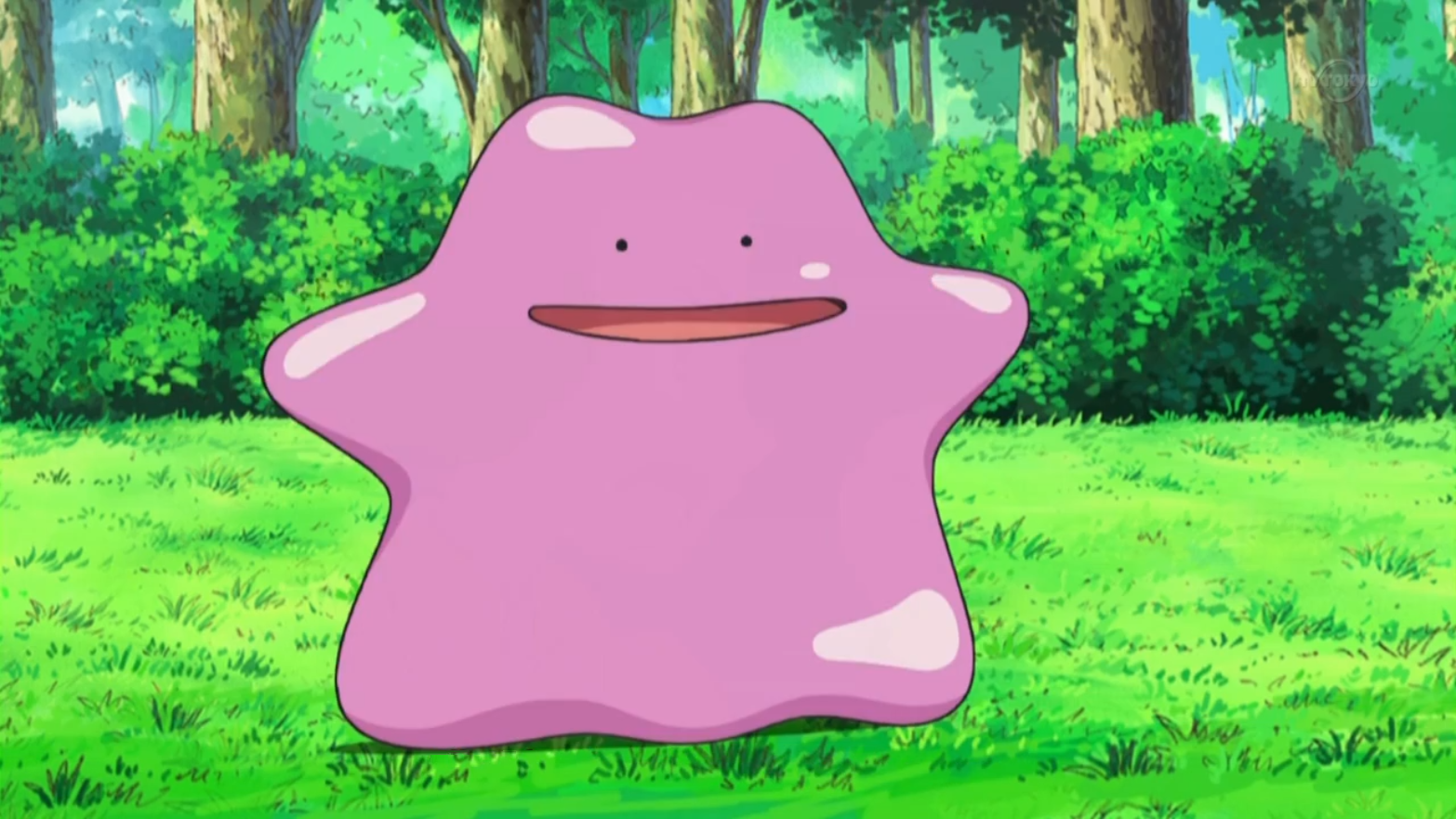 via bustle.com[/caption]
via bustle.com[/caption]
It's been well-established through Pokémon lore and film that Mewtwo is a clone of Mew. Mew is the ancestor of every known Pokémon, containing the genetic information of every species in its cell structure, explaining its ability to learn every move in the game and use all technical and hidden machines. But one fan theory says Ditto may be a failed clone of Mew, perhaps one of the early attempts to create Mewtwo. As it turns out, Mew and Ditto share many very similar traits.
To begin with, Mew and Ditto are both genderless and are the only two Pokémon capable of asexual reproduction. Their base stats are leveled across the board, and they both weigh exactly 8.8 pounds in-game. They are also the only Pokémon who can naturally learn the move "Transform." They share almost identical colors, including their normal and shiny variants. Mewtwo's bio also states that he is the only "successful" clone of Mew, which could imply there were many other attempts. Mew contains the DNA of every Pokémon, and Ditto has the ability to alter his genetic make-up to transform itself into any other Pokémon in existence. Finally, Ditto appears in many places associated with Mewtwo, such as the Pokémon Mansion and the Unknown Dungeon.
Glitch City
[caption id="attachment_3475" align="alignnone" width="1280"]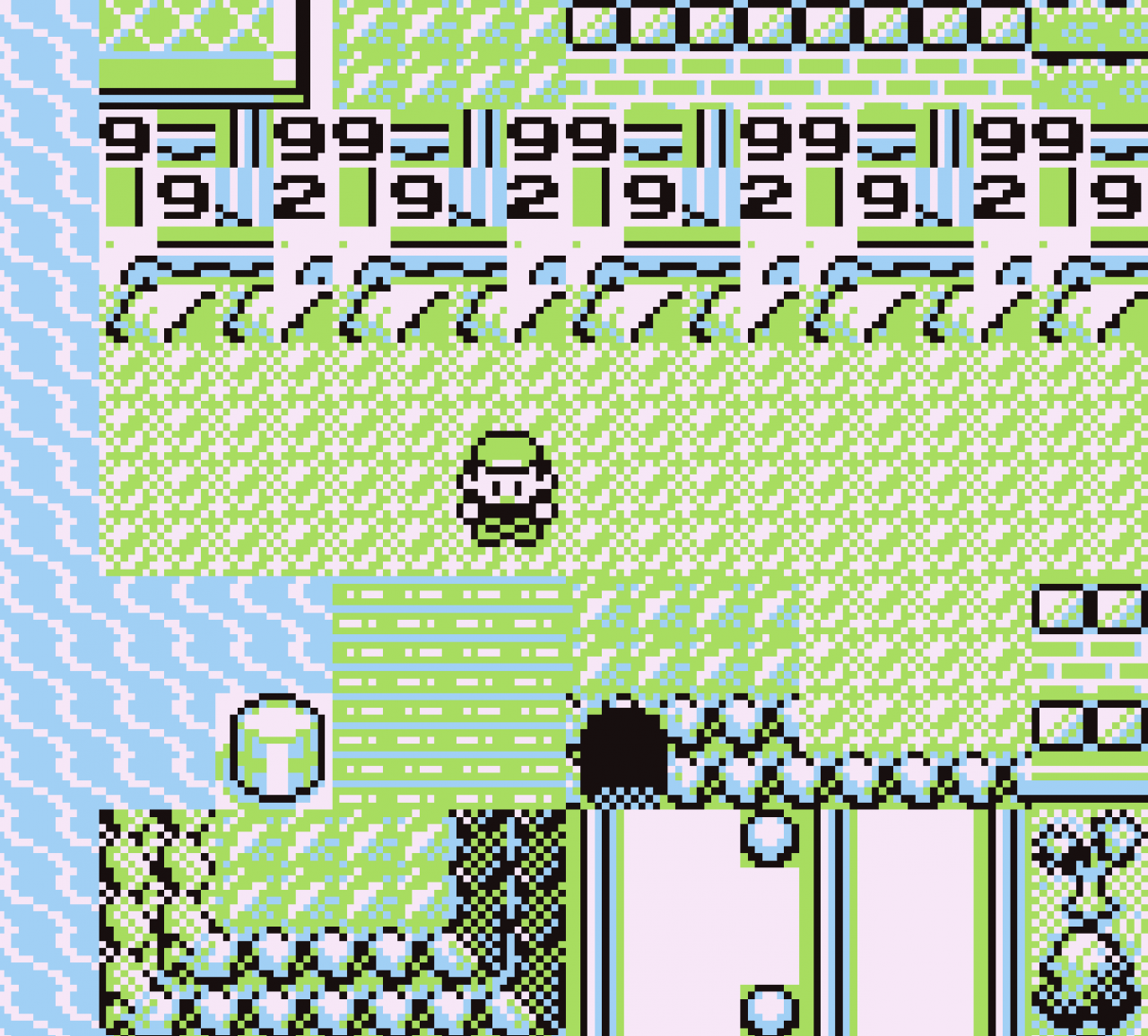 [via planetdolan.com][/caption]
[via planetdolan.com][/caption]
Players of Pokémon Red/Blue who follow specific instructions can access a corrupted map of invalid tile data in-game, colloquially called "Glitch City." Glitch City can be accessed by following a series of precise steps in the Safari Zone, ending with the player's 500 steps running out and exiting through the south gate. They will then appear in Glitch City. Interestingly, the location changes appearance based on which map the player was on when they ran out of time. Glitch City stands as a creepy testament to the possibilities of programming bugs – it seems to be the Twilight Zone of Pokémon; a place where the rules don't apply.
In Glitch City, cuttable trees are immune to the move, signs are unreadable, and doors and caves cannot be entered. It is possible to use "Surf" in some places, even if there are no water tiles. Objects are not present, warps are not present, and sometimes the player may be able to walk through walls or always be spinning while walking. In Pokémon Yellow, the player's Pikachu may run to random places. Fishing or bringing up a menu may change the appearance of the terrain, sometimes making water appear. Wild Pokémon still appear in the same way as the map where the player entered, though walking too far in any direction will crash the game. The Pallet Town version does not allow the player to move at all. Finally, the only way to leave Glitch City is to use "Fly" or "Teleport" to get out of it.

